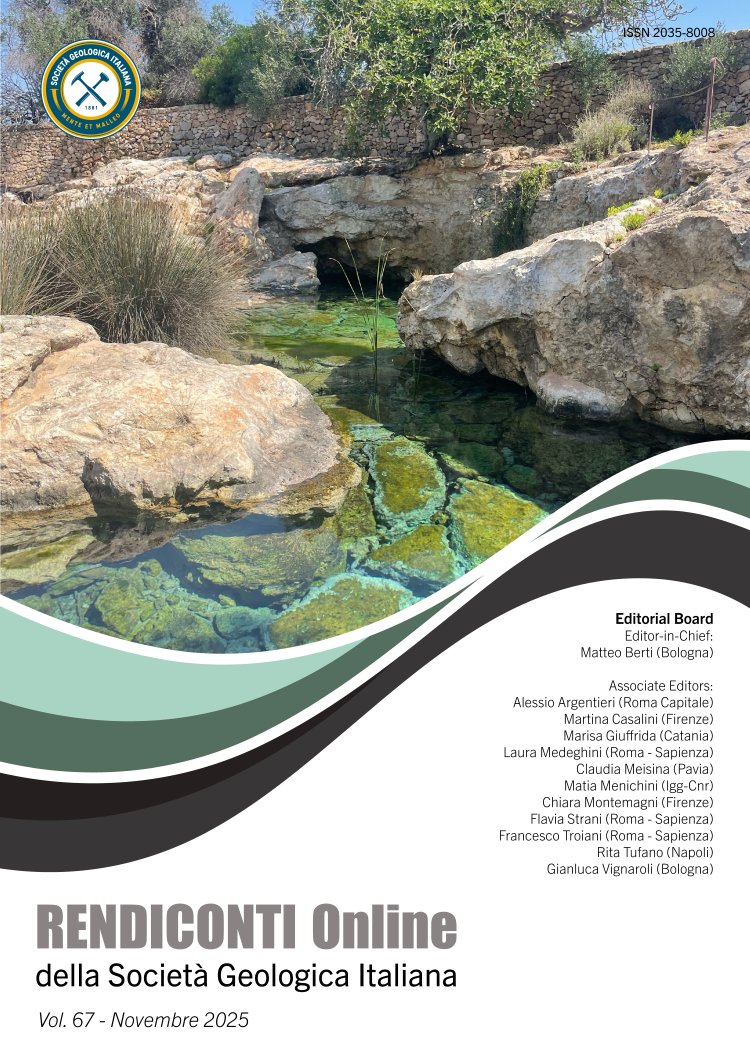

Anthropogenic sinkholes’ susceptibility assessment in Palermo, Italy, using a machine learning algorithm
Giuseppe Bausilio1, Vincenzo Allocca1, Chiara Cappadonia2, Diego Di Martire1, Luigi Guerriero1, Marcello Panzica La Manna3, Rita Tufano1 & Domenico Calcaterra1
1Department of Earth Sciences, Environment and Resources, University of Naples Federico II, Napoli, Italy.
2Department of Earth and Marine Sciences, University of Palermo, Palermo, Italy.
3Geologist, Palermo, Italy.
Corresponding author e-mail: giuseppe.bausilio@unina.it
Volume: 67/2025
Pages: 15-20
Abstract
Anthropogenic sinkholes are a widespread phenomenon in Italy, and Palermo, the capital city of the Sicilian Region in South Italy, is one of the urban areas most affected. Anthropogenic sinkholes refer to vertical depressions, usually circular or sub-circular in plan. They can vary from localised subsidence to actual collapses, often caused by either the presence of unstable underground man-made cavities or by voids related to aqueduct or sewer leakages. The machine learning algorithm Maximum Entropy was employed to evaluate the anthropogenic sinkhole susceptibility in the Palermo urban area. Given the outstanding results provided by this machine learning algorithm (ROC/AUC score = 0.926), it can be considered a valuable tool in urban planning and cultural heritage protection.
Keywords
Get Full Text